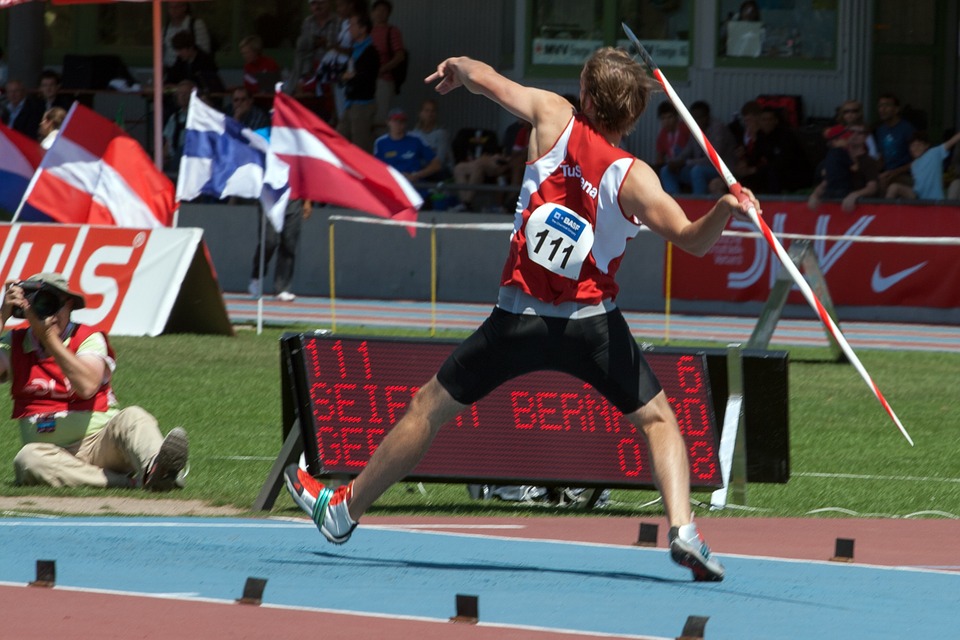
Random Thoughts on Sports Performance Training – Installment 18
It’s time for the May installment of my random thoughts on sports performance training. I never really expected this series to last this long, but I’m enjoying it and the feedback has been awesome, so we’ll keep it rolling. Here goes…
1. Don’t eliminate internal focus cues altogether.
I’m a big fan of external focus cues. As an example, I’ve had much better luck with saying “show me the logo on your shirt” than “pull your chest up” when coaching a deadlift. Effectively, individuals seem to perform better when we let them organize themselves to their surrounding environment (in this case, the logo on the shirt), as opposed to us sending mixed messages that might interfere with how they would naturally figure out how to organize the body for optimal performance. The key word here, however, is performance. If you’re just looking to run faster, jump higher, or throw harder or farther, external cues are your best bet.

What happens is there is aberrant movement, though? We’ve always heard that athletes are great compensators. If we just tell an athlete with very limited hip extension to “push the ground away” when he sprints, isn’t he just going to continue to jack his lower back into excessive extension when the better long-term strategy is to get the hip extensors to do the job? To this point, there is actually some research (examples here and here) that internal focus cues definitely still have their place, especially when trying to modulate muscular recruitment patterns on single-joint exercises. I use internal focus cues (usually with tactile facilitate, or touching the region in question) every day to get better positional awareness and recruitment patterns, particularly with our arm care drills.
If you had to put me on the spot, I’d say that external focus cues are better and definitely a good place to start. I don’t think we should throw the baby out with the bath water, though; internal cues definitely should always have a place in your coaching toolbox.
2. Barefoot deadlifting doesn’t just clean up movement quality; it also makes it easier to coach.
I’ve written a lot in the past about how I like to have our athletes deadlift barefoot or in minimalist sneakers. Because the deadlift is a posterior chain dominant exercise and we want the athletes to think about driving their heels through the floor, it seems only fitting to make it easier for those heels to be in close proximity to the floor. Additionally, given that some people have mobility or stability restrictions that make it hard to get all the way down to the bar without compensation, being barefoot actually shortens an individual’s range of motion by an inch or so.
That said, there are two technique flaws you can spot easier in a barefoot scenario. First, you never want to see an athlete deadlift on a pronated foot; rather, a supinated foot gives us the rigidity we need to put force into the ground. You’ll commonly see athletes “spin out” and dump into pronation like this, though.

Second, you can more easily spot what the toes are doing. Often, when someone has a faulty hip hinge pattern, they’ll simply pull the toes up rather than maintaining “tripod foot.” This is most easily recognized on the decent of the lift.

You can certainly spot these issues when athletes have shoes on, but they are definitely easier to pick up in the barefoot scenario.
3. If you’re successful in one rotational sport, you’ve got a higher likelihood of success in other rotational sports.
A few days ago, Bartolo Colon hit his first career home run at age 42. This feat is is impressive in itself, but it’s more surprising to the casual observer when you realize that Colon is a) a pitcher and b) obese.
For me, though, this wasn’t nearly as surprising as it was entertaining. Efficient rotation is efficient rotation, whether you’re a hitter, pitcher, hockey player, or golfer. There’s a reason hockey and baseball players are usually excellent golfers without much formal skill instruction; they understand sequencing from the ground up.
Bartolo Colon has 17 years of Major League Baseball service time, has thrown over 3,000 innings, and has won 221 MLB games. You break down or lose effectiveness long before any of those numbers happen if your body doesn’t “get” efficient rotation.
4. A little upper trap rolling can go a long way in improving upward rotation of the scapula.
Serratus anterior, lower trap, and upper trap work together to get the upward rotation of the scapula that we want with overhead movement.It’s important, though, that they all work together to do this. If you want to get up to speed on upward rotation, give this video a watch:
If you’ve read this blog or followed me on YouTube for any length of time, you’ve probably realized that I’m a huge serratus anterior guy. It’s really important that you get serratus anterior going to create the rotational component of upward rotation that gets the shoulder blade around the rib cage. I have quite a few serratus activation videos (examples here, here, and here), but I think it’s important to realize that if someone doesn’t have good serratus recruitment, they’ll often create a pure scapula elevation (shrugging) pattern instead of the clean upward rotation we want. Effectively, upper trap and levator scapulae can pick up the slack and do too much work. When I see this pattern, I’ll often encourage individuals to try out a little bit of upper trap rolling with a lacrosse or baseball to reduce the bad stiffness “up top” before we get to work.


